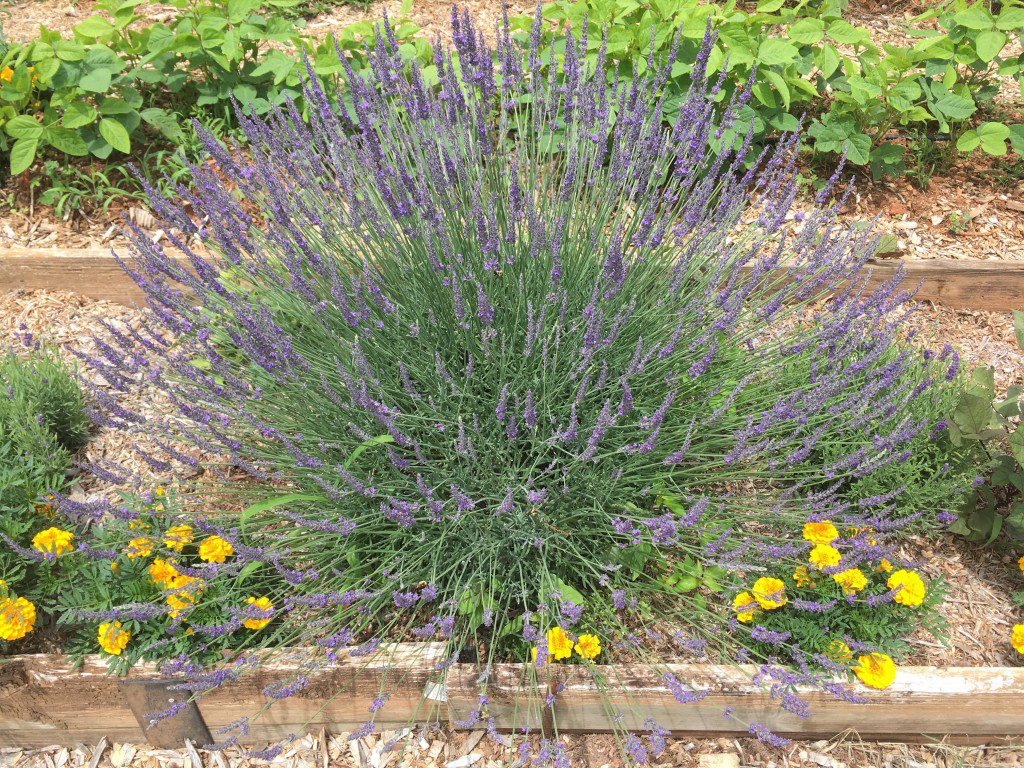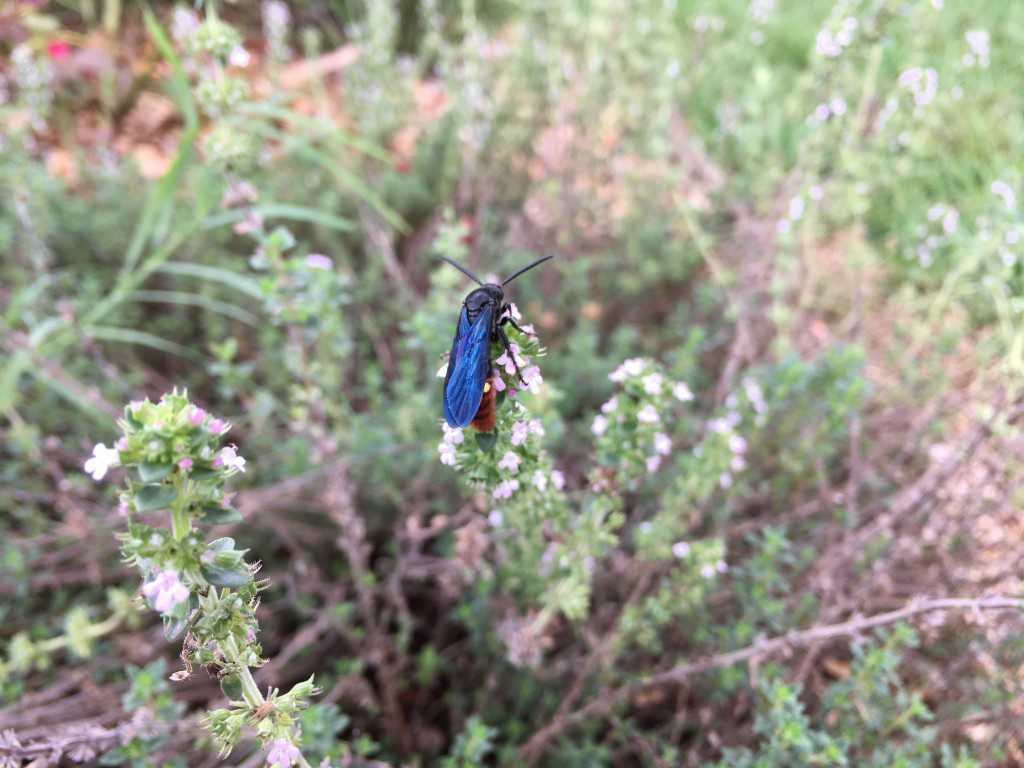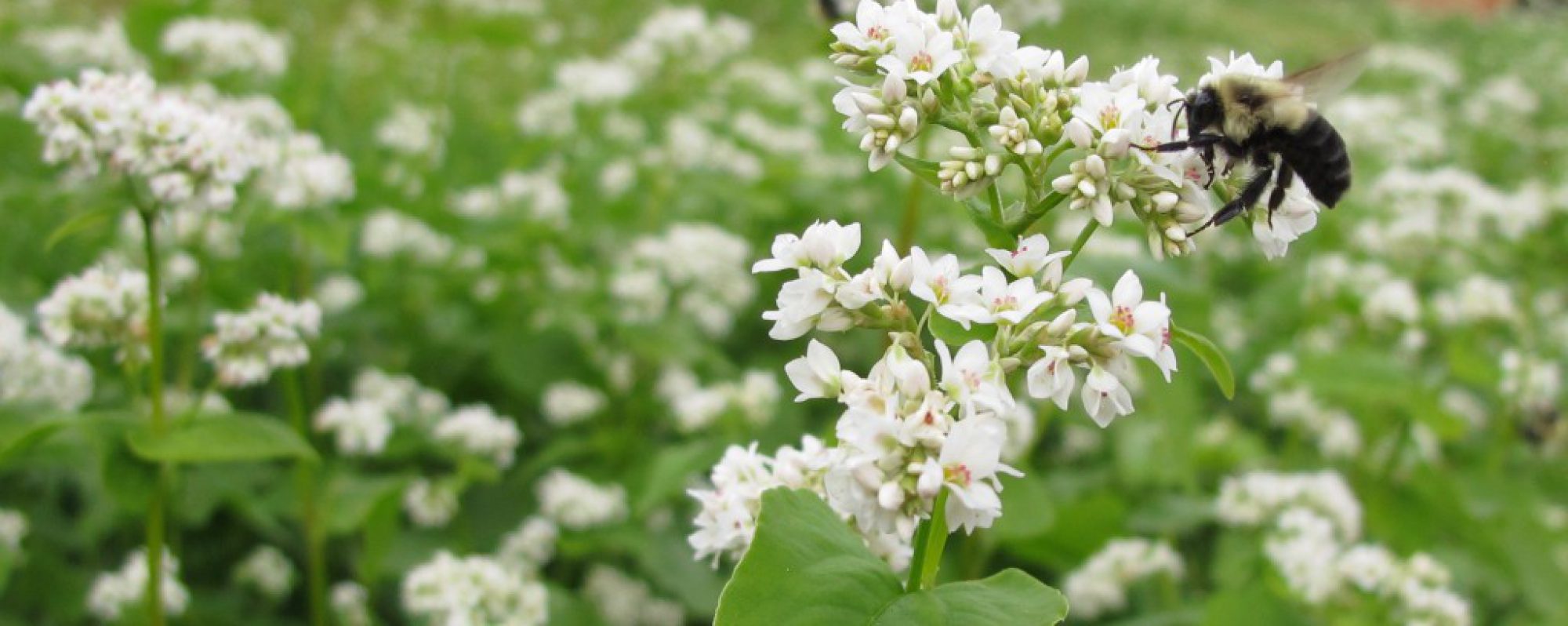When I talk with new gardeners, I always recommend starting out with a few herbs. Herbs are some of the easiest plants to grow because they often tolerate a wide range of soil conditions and have few insect and disease issues. Because herbs are relatively, carefree they have an obvious fit in a food garden but they also work just as well incorporated into the landscape or in containers.
Herb Culture
Herbs prefer a well-drained soil with a pH between 6 to 7.5. If planting in our native soil plan to incorporate at least two to three inches of compost or well-rotted manure to a depth of 8-12 inches. A soil test will tell how much lime needs to be added to change pH in the optimal range.
Herbs like most vegetables and flowers do best in a location that receives at least 6-8 hours of direct sunlight. Mulching will also help discourage weeds and maintain soil moisture levels.

Classification of Herbs
Botanically herbs are classified as annuals, biennials or perennials. I break them down a little differently because of our long growing season and growth characteristics.
Spring/Fall annuals: These are plants that do not seem to thrive during our hot, humid summers: Chives, dill, parsley, borage, arugula, and cilantro. You can still get fresh dill and cilantro for those summer pickles and salsa recipes by planting in an area that is sheltered from the afternoon sun.
Summer annuals: Plants like basil, calendula and Papalo do best once soils have warmed a bit in the spring. Basil should be managed to prevent flowering, because leaf quality diminishes once the plant reaches this stage. To delay flowering stage of basil simply pinch or cut the tips of stems every so often to keep the plant in vegetative stage. Papalo is an interesting herb from Central and South America. It has an upright growing habit and its taste is described as a mix of cilantro and arugula.
Tender Perennials: These plants are not quite perennial but with a little bit of effort you can keep them going year after year. Plants like lemongrass and stevia thrive in the summer but will die to the ground with a frost. I like to dig up a few shoots or half a clump of my lemongrass each year and keep it in the basement. When planting back out it just takes a few sprigs in a pot or planting area to have more lemongrass than one needs.
Container Plants: Even if you have space, these herbs belong in a container due to their aggressive, spreading nature. Any of the mints, catnip, anise hyssop, bee and lemon balm are herbaceous perennials, meaning they will die back to the roots during winter. These are excellent plants for fragrance, teas, and nectar source for pollinators. However, they are ruthless in their quest for world domination. Many gardeners will plant them in half-buried containers to prevent the spread of roots to unwanted areas.
Perennials: The perennial herbs are probably my favorite because they incorporate well into the broader landscape. Plants like rosemary, thyme, sage, oregano, lavender, stachys or lambs ear, and winter savory have excellent characteristics that help them fit into ornamental settings. All are evergreen and provide blooms that help encourage beneficial insect habitats. Thyme, oregano and winter savory have spreading growth habits that make them great ground covers. Rosemary has needle like leaves that resemble a small pine and can be pruned or shaped into desired forms. I like to keep all of these plants near the house to make collecting them for use in the kitchen more convenient.

Propagation
A number of herbs, particularly the annuals, can be grown from seed. Direct seeding can be done but beginning plants indoors 4-6 weeks prior to setting out can increase success. Perennial herbs such as such as lavender and rosemary are best propagated by cuttings in spring and summer. Take a 3 to 5 inch cutting of new growth, remove the leaves from the lower two-thirds, and dip the end in a rooting hormone. Insert the cutting so almost the entire bare stem in the potting medium. Keep moist and in three to six weeks, the plant should have a root system.
Harvesting and Preserving
Herbs grown for foliage can be harvested any time but it is ideal to collect early in the morning after any moisture has dried. Drying herbs can be as simple as tying bundles of stems together and hanging warm, dry, dark area or in a paper bag with ventilation holes. Herbs can also be dried in a gas oven at low heat or in a food dehydrator. Simply strip the leaves and lay them out so they do not overlap.
Herbs can be preserved by freezing dry leaves or by placing leaves in ice trays with water. Frozen begin to lose quality after three to six months.
